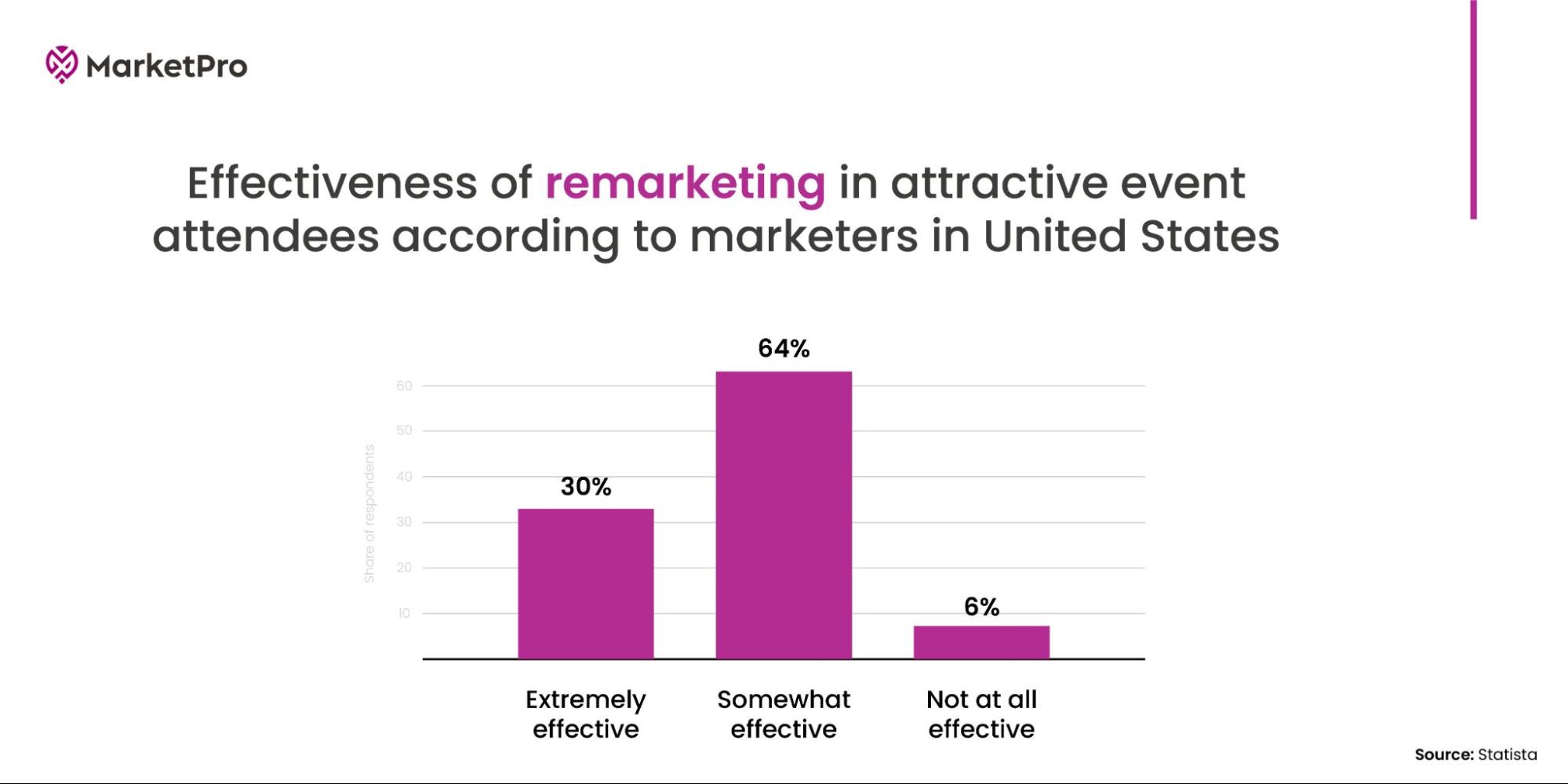In today’s competitive marketplace, businesses are increasingly focusing on retaining their existing clients rather than burning through resources to target new ones. After all, isn’t it more effective to nurture and target existing customers instead of constantly searching for new ones?
See, there’s no harm in seeking new customers. Imagine having a strategy that keeps existing clients happy and consistently engaged with their products. This is where remarketing comes into play, nurturing customer relations and continuously finding ways to improve conversions.
In this blog, you will explore key elements of remarketing and how it can transform your customer retention strategy.
How Does Remarketing Work?
Remarketing mainly revolves around turning the customer’s initial interest into final conversions. Companies aim to arouse desire in their target audience by retargeting emails that act as simple follow-ups with persuasive offers or retargeting them with more personalized ads based on their previous interactions with their website.
How Remarketing is Suddenly Relevant?
Ever heard of the word procrastination? Well, that makes remarketing crucial for businesses.
Buyers often find the product or service valuable and conduct all the relevant investigations behind it, ask for customer support, or see business testimonials. But still, before the very last stage, they just give up! And that’s what burns the whole sales funnel.
Now, businesses cannot “spray and pray” their marketing campaigns. It’s not necessary for buyers to like and purchase products instantly. Most of the time, their products see that path of carts, make peace with contact information, or, if lucky, sign them up for a free trial. Remarketing has all the tools and strategies that send personalized emails to their customers, encouraging them to subscribe to their paid models.

Instead of solving loopholes and straightening buyer conversion stages, it also works on a retention basis. This is why 20% of advertisers allocate a distinct budget specifically for remarketing campaigns. Businesses create awareness and arouse desire by building loyalty among their consumers. These practices show that companies don’t limit their relationships to the buying or selling plethora.
Instead, they take the extra mile by providing them with loyalty programs and educational campaigns, which shows how valuable their relationship is for them.
Remarketing Vs. Retargeting: What’s the Actual Difference?
Remarketing and retargeting are somewhat similar but still different when it comes to ground basics. Let’s explore this further.
Remarketing is done when prospects have already shown interest in the business’s website. Tracking tools simply signal the marketers related to their prospect visit and give them details about their journey. In return, marketers create personalized ads to capture their attention and remind them about what they might be interested in.
However, it is not limited to showcasing ads based on customers’ interests. It also works on re-engaging with customers via email. Sending them follow-ups or providing them with news about product deadlines aims to persuade customers to subscribe to paid options, upgrade their service, or simply buy the product hanging in their carts.
Suggested Read: Marketing Technology (MarTech) | Definition, Trends, and Examples
On the other hand, Retargeting is more of a broad concept. It is mainly operated by machine learning to understand customers’ online behaviors and target them with digital ads in their search engines or social media platforms. It doesn’t necessarily operate on customers’ interaction with their website first; instead, it studies their online activities and targets them accordingly prior to the customers’ interactions with their brand.
Different Ways of Remarketing
While we read about the what, how, and differences between remarketing and retargeting, it’s time to learn about some of the major types of remarketing services:
Standard and Dynamic Remarketing
Standard remarketing is how businesses adapt to show tailored ads to potential customers whenever they visit their sites. Dynamic remarketing involves showing personalized ads related to brands whenever they see a particular brand.
Google ads remarketing campaigns fall under this category, where marketers create lists of their customers in Google ads management. This helps Google match their Google accounts and serve them for remarketing purposes by utilizing various Google platforms.
Google tends to encourage its partnered websites to target customers with tailored display ads and gives a platform for Pay-Per-Click (PPC) remarketing services.
Some of the remarketing activities that reside in standard and dynamic remarketing:
Remarketing helps businesses recapture wanderer visitors by providing them with personalized experiences, such as digital ads or customer support pop-ups that ask customers what they need. These little experiences add massive value to the complete customer buying journey.
- Google display ads
- Google search ads
- Youtube ads
Email Remarketing Campaigns
By creating remarketing campaigns, businesses strengthen customer relations and improve lost connections. Businesses conduct different email remarketing campaigns to manage their customer interactions effectively. Some emails are just related to providing updates on purchased products, reminder emails for the discount deadlines, or telling customers about the products still left in their shopping carts.
Follow-up emails usually provide information related to product delivery or offer complimentary customer support. Some marketers send emails to encourage their customers to use their products’ discount codes.
At the same time, adding additional features and discounts in their emails tends to persuade customers who have not continued their buying journey, such as those who have abandoned their services or been inactive for a while.
Social Media Remarketing
Social media marketing is another form of marketing in which marketers conduct remarketing activities. Businesses usually operate their social media remarketing by adding their customers’ email lists to social media platforms.
Businesses manage different social platforms like LinkedIn, TikTok, and X (Twitter). This operates after potential customers show interest in their products and services. These personalized ads appear on their feed, whereas some ads are also inspired by users’ search engine behaviors. For example, customers can find ads related to project management tools on their social media after searching for them on search engine platforms like Google.
How Remarketing Helps Businesses?
Some of the benefits of how remarketing can help businesses are:
-
Retain Lost Visitors
Remarketing helps businesses recapture wanderer visitors by providing them with personalized experiences, such as digital ads or customer support pop-ups that ask customers what they need. These little experiences add massive value to the complete customer buying journey.

However, website traffic is one thing; getting them to convert is entirely different. Still, it helps businesses get recognized on search engine platforms, improving their organic seo and giving marketers the initial opportunity to spark their relationship with their brand.
-
Turn Leads Into Conversions
Remarketing helps businesses improve their sales funnel stages and helps marketers revamp and rejuvenate their sales and revenue. Their campaigns and strategies revolve around reliving their lost connections and interests. Most users give up their journey at the very last moment or leave the buying cycle after giving contact details.
As shown in a Harvard Business Review experiment, remarketing campaigns can boost click-through rates by 11% and increase product revenue by 38%. Companies revive their conversion cycle by encouraging their leads to try their paid option or buy their product lying in shopping carts. This is done through personalized email campaigns and tailored advertising strategies.
-
Secure Marketing Budget
Surprisingly, remarketing campaigns only add value to brands’ revenue growth by embedding remarketed messaging in their digital ads and email campaigns. The main reason for securing the company’s marketing budget is because they tend to invest resources and marketing efforts into targeting customers who have likely shown interest in their products in the past. This increases the click-through rates and conversion rates of their marketing messages.
Maximize Your Remarketing Campaigns the Right Way
To conclude, remarketing is the ultimate solution for businesses to boost their conversions and enhance customer relationships. Their focus didn’t end with selling their products or services; instead, they worked on creating campaigns and strategies that fostered loyalty and retained their relations for long-term customer relationships.
Let Market Pro elevate your marketing campaigns with effective remarketing efforts to generate more sales and drive revenue.

